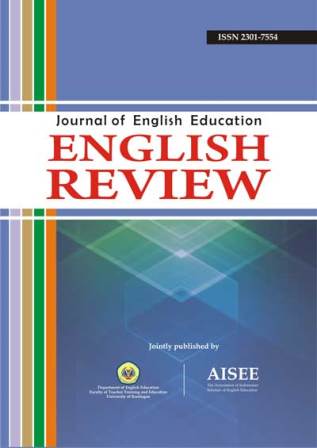THE GAP BETWEEN LEARNING NEEDS AND ITS IMPLEMENTATION IN ENGLISH FOR HOSPITALITY SPECIFIC PURPOSES PROGRAM
Abstract
This study is to reveal the gap between the English language communicative competence required by students of the hospitality department and English learning program provided at state of Vocational High School 1 Tasikmalaya, Indonesia, drawing through qualitative evaluation approach, including semi-structured interviews and observations. It explores how learning needs is implemented in teaching-learning process and the respondents description, what they saw and what they felt. Findings show inconsistency between learning needs in enrichment students English communicative competence and teaching-learning process. This prompts a re-instructional design of English learning for hospitality specific purposes program at this department currently. It provides to support of graduating required at hospitality industry workplace. Lead of recommendations, in terms of both the instructional design including materials development, teaching method usage and the professional development of ESP teachers, to address an understanding of the gap identified, so that students will enable to communicate more effectively with the English, in such contexts graduates can hire at the hospitality industry workplace.
Keywords: learning needs, pre-vocational English field, authentic materials and teaching methods
All articles published in English Review: Journal of English Education (ERJEE) are licensed under the Creative Commons Attribution 4.0 International License (CC BY 4.0).
Copyright Ownership
Authors retain the copyright of their articles and grant ERJEE the right of first publication. The journal is granted a non-exclusive license to publish, reproduce, and distribute the article in any format, medium, or platform, provided that proper credit is given to the original authors.
License Terms – CC BY 4.0
Under the Creative Commons Attribution 4.0 International License, others are free to:
- Share — copy and redistribute the material in any medium or format
- Adapt — remix, transform, and build upon the material for any purpose, even commercially
As long as they:
- Provide appropriate credit to the original author(s) and source
- Provide a link to the license (https://creativecommons.org/licenses/by/4.0/)
- Indicate if any changes were made
There are no restrictions on the reuse, reproduction, or adaptation of published articles as long as attribution is properly given.
Author Warranties
By submitting a manuscript to ERJEE, authors confirm that:
- The work is original and does not infringe any existing copyright.
- The manuscript has not been previously published and is not under consideration elsewhere.
- All sources and references are appropriately acknowledged.
- Necessary permissions have been obtained for any copyrighted materials used.









